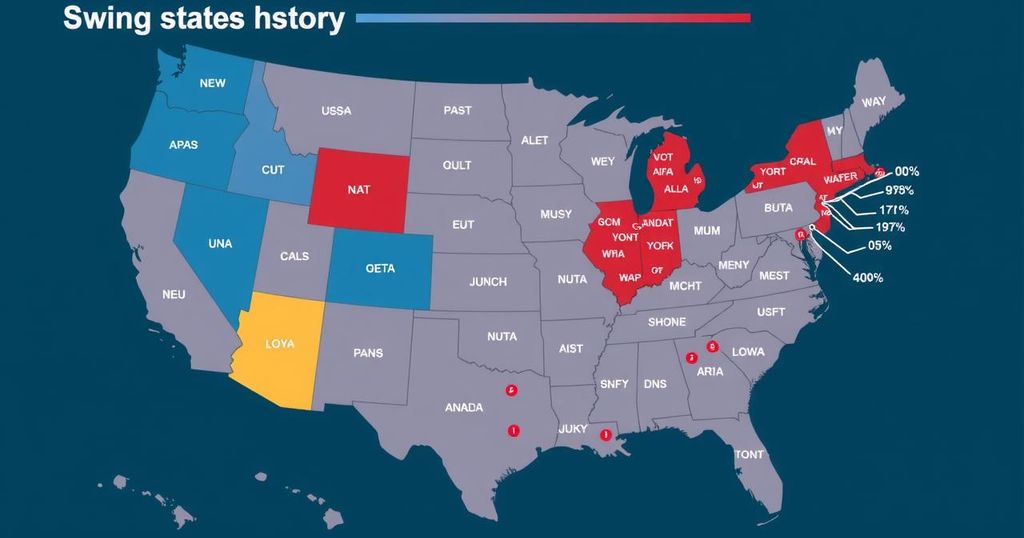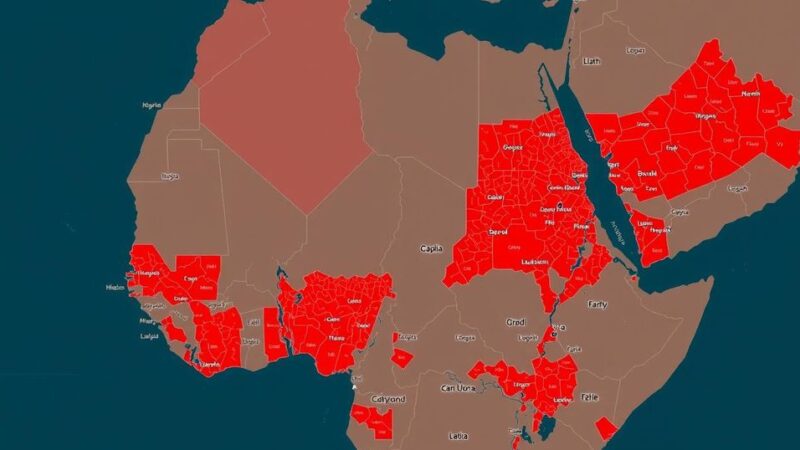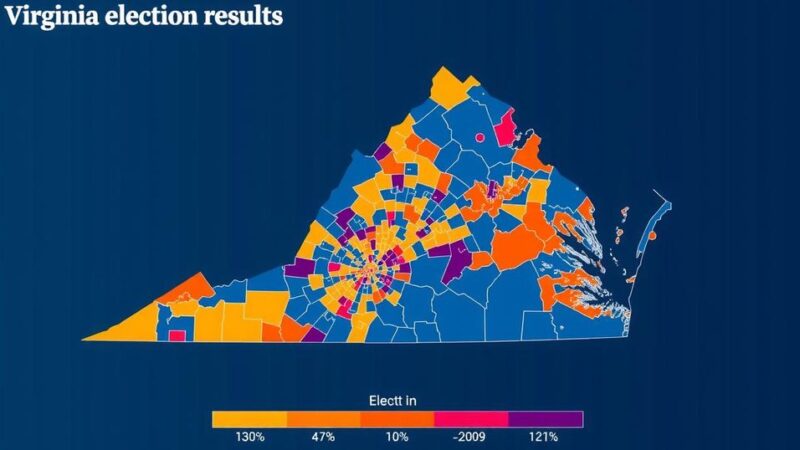The seven swing states – Pennsylvania, Georgia, North Carolina, Michigan, Arizona, Wisconsin, and Nevada – are crucial in US elections, having fluctuated between Republican and Democratic support. These states have seen significant shifts, particularly in recent elections, with candidates focusing on them to secure victories. Their evolving demographics and voting behaviors make them key battlegrounds for both political parties in the upcoming election.
The seven pivotal swing states of Pennsylvania, Georgia, North Carolina, Michigan, Arizona, Wisconsin, and Nevada play a crucial role in determining the outcome of the US presidential election. Historically, these states have not always been classified as battlegrounds; they have shifted in their voting patterns over the decades. While demographic changes and party identification have influenced recent elections, these states remain central to the electoral strategy of both major political parties, particularly as candidates focus their campaigning efforts on appealing to voters in these regions. Arizona was a stronghold for Republicans until Joe Biden’s narrow victory in 2020, marking a significant shift. Georgia, traditionally Republican, swung Democratic in the same election, breaking a long-standing pattern. North Carolina has leaned Conservative for decades, yet Trump’s victories in 2016 and 2020 showcase its competitive nature. Nevada usually trends Democratic, particularly in recent elections, while Pennsylvania and Michigan, after years of Democratic dominance, experienced Republican wins in 2016. Wisconsin similarly transitioned to Republican support under Trump before reverting back to Democratic support in 2020. As the current election approaches, polls indicate close races in these states, highlighting their ongoing relevance in the electoral landscape and their potential to sway the results significantly on Election Day. Understanding their voting history offers essential insights into the dynamics at play as the nation prepares for the critical elections ahead.
The relevance of swing states in United States elections cannot be overstated, as they often determine the final outcome of presidential races. Swing states, also known as battleground states, lack a consistent partisan lean, making them susceptible to shifts in voter sentiment and demographic changes. These fluctuations make them the focal point for election campaigns as candidates tailor their strategies to attract undecided voters. The evolving political landscapes in the seven identified states present a microcosm of the broader national voting trends and the challenges faced by both Republican and Democratic candidates.
In conclusion, the historical voting patterns of Arizona, Georgia, North Carolina, Michigan, Wisconsin, Pennsylvania, and Nevada showcase their evolution into key battlegrounds that could decisively influence presidential elections. As these states continue to change demographically and politically, their significance remains critical in the strategy of each campaign. The outcomes in these regions on Election Day will undoubtedly be pivotal in determining the next president of the United States.
Original Source: www.aljazeera.com






